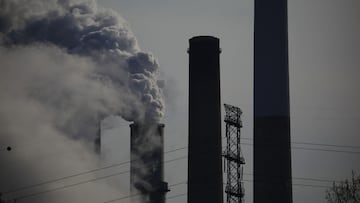The five US states with the highest per capita CO2 emissions
Wyoming, North Dakota, and Alaska may be small in population, but as fossil fuel-producing states, their carbon footprint is the largest in the country.


The covid-19 pandemic led to a dramatic decrease in carbon dioxide emissions, as demand fell sharply after stay-at-home orders and travel bans were imposed. However, the associated decreases in production had no impact on the top ten states with the most carbon-intensive economies.
What were the ten most carbon intensive economies in 2020 and 2021?
- Wyoming
- West Virginia
- Louisiana
- North Dakota
- Alaska
- Kentucky
- Mississippi
- Indiana
- Montana
- Arkansas
Many of these resource-rich states have smaller populations, which helps to explain why the five states with the highest per capita emissions levels all made the list above.
States with the highest per capita CO2 emissions in 2021
| Wyoming | 94,3 |
| North Dakota | 72.7 |
| Alaska | 53.0 |
| West Virginia | 49.5 |
| Louisiana | 40.8 |
| Montana | 25.8 |
| Kentucky | 24.7 |
| Indiana | 24.4 |
| Nebraska | 24 |
| Iowa | 22.9 |
US oil and gas sector plans to increase fossil fuel production
Reducing emissions is essential to slowing the impacts of climate change. There is no future where the threat of climate change is reduced without decreasing the greenhouse gas emissions that enter the earth’s atmosphere. In the future, if carbon capture technology or ecological restoration can be scaled to the levels needed to eliminate enough carbon dioxide from the atmosphere, the need to reduce emissions may become less essential. We are very far from that reality.
Oh, but what about offsets? Carbon offsets are, by and large, ineffective in contributing to a sustained decrease in emissions. With very little verification and monitoring of these schemes, corporations that tout their use are often greenwashing their incredibly harmful environmental practices.
At a time when the need to reduce emissions could not be more obvious, the oil and gas sector in the United States plans to expand production. The ongoing war in Ukraine and the cutting off of Russian oil energy resources by the European Union and other allies led to a surge in demand for oil and gas produced in the US. In December 2022, Germany imported, for the first time, over seven million cubic feet of US liquified natural gas. And Germany is not alone; many European member states have increased their imports of US natural gas to offset losses from Russia.
Each year between April and October, the excess natural gas produced in the US is injected into storage facilities. After natural gas from Russia stopped flowing to Europe, production exploded in the United States. Still, it appears that rather than ending up on the other side of the Atlantic, it is being injected into storage. The US Energy Information Administration reported this week that total injections since April have exceeded the five-year average (2018-2022) by six percent.
Related stories
Oil markets tell a similar story.
In March, the EIA reported that US petroleum exports had hit record levels, averaging 3.6 million barrels per day (b/d) in 2022. This figure represented a twenty-two percent increase over the 2021 average. The increased demand is expected to continue as the prospect of peace remains far from the conflict’s current horizon. Based on current trends, the EIA predicts that this year and next, the average number of barrels of crude oil produced to reach 12.4 and 12.8 million barrels per day, respectively.

